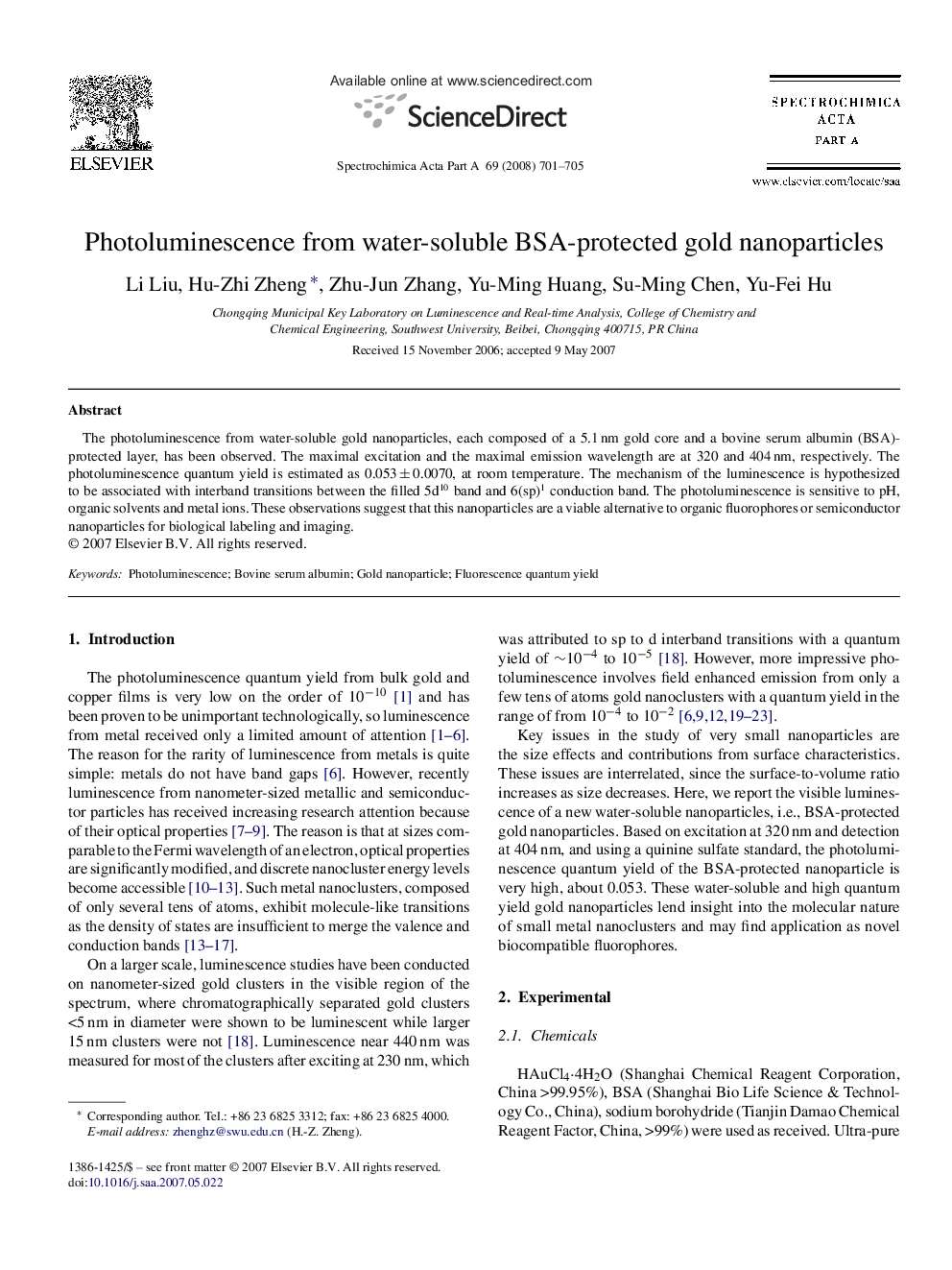| Article ID | Journal | Published Year | Pages | File Type |
|---|---|---|---|---|
| 1234584 | Spectrochimica Acta Part A: Molecular and Biomolecular Spectroscopy | 2008 | 5 Pages |
Abstract
The photoluminescence from water-soluble gold nanoparticles, each composed of a 5.1 nm gold core and a bovine serum albumin (BSA)-protected layer, has been observed. The maximal excitation and the maximal emission wavelength are at 320 and 404 nm, respectively. The photoluminescence quantum yield is estimated as 0.053 ± 0.0070, at room temperature. The mechanism of the luminescence is hypothesized to be associated with interband transitions between the filled 5d10 band and 6(sp)1 conduction band. The photoluminescence is sensitive to pH, organic solvents and metal ions. These observations suggest that this nanoparticles are a viable alternative to organic fluorophores or semiconductor nanoparticles for biological labeling and imaging.
Related Topics
Physical Sciences and Engineering
Chemistry
Analytical Chemistry
Authors
Li Liu, Hu-Zhi Zheng, Zhu-Jun Zhang, Yu-Ming Huang, Su-Ming Chen, Yu-Fei Hu,
